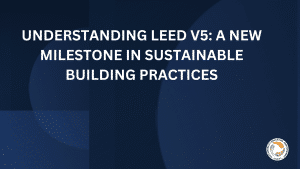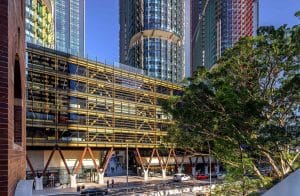What is Coronavirus?
These are testing times for humanity. The Coronavirus disease (COVID 19) has spread like wildfire across the world, killing over 16,000 people and infecting more than 421,000 (as of March 25, 2020). The outbreak initially started from an animal market in the city of Wuhan in China, but has enveloped the entire planet today, causing global markets to crash and creating panic among countries who are taking desperate steps to curb its spread. And the worst part is that the human race does not have any fool proof cure for it – at least not till now.
While most people infected with the COVID-19 virus experience mild to moderate respiratory illness and recover without requiring special treatment, older people and those with underlying medical problems like cardiovascular disease, diabetes, chronic respiratory disease, and cancer are at high risk and more likely to succumb to the infection.
Since this virus spreads primarily through droplets of saliva or discharge from the nose when an infected person coughs or sneezes, it is highly important for people to practice respiratory etiquette, wash their hands frequently, use an alcohol based hand-rub and avoid touching their face.
Economic impact of Coronavirus
Coronavirus has wreaked havoc in the global financial markets. As factories across the globe suspend their activity and workers stay at home to try to contain the virus, the world is staring at an economic crisis in the wake of the COVID 19 pandemic. Among the worst hit are the travel industry, aviation sector, and hotel and restaurant businesses as people are staying indoors and avoiding all forms of non-essential travel.
Oil has slumped to its lowest price since June 2001. Investors fear that the global spread of the virus will further hit the global economy and demand for oil. Even gold, that is traditionally considered a “safe haven” for investment, has seen a sharp decline in prices.
Coronavirus impact on Architects
Architects face both short-term and long-term challenges during the global pandemic.
Last week, architecture firm principals locked their office doors behind them and implemented tele-work policies as part of the worldwide push to combat the spread of COVID-19. The larger AEC industry felt the ripple effects of social distancing measures later in the week as Boston’s mayor placed a two-week halt on construction projects, setting a potential precedent for other city officials to follow.
In this time of uncertainty, architects and their firms are learning to face short-term challenges as they adapt to conducting day-to-day operations in a new, largely online way. In the longer term, navigating economic uncertainty—the scope of which is still emerging—will be top-of-mind for every firm.
Coronavirus and Building Wellness
In such times of worldwide panic and uncertainty, let us discuss how certain aspects of building science can help reduce the exposure to this deadly virus.
First of all, let us understand what building wellness is.
According to some studies, people nowadays, especially in urban areas, spend over 90% of their time indoors. As such, the built environment has a profound impact on our overall health and well being. A lot of factors affect the health, happiness and productivity of a building’s occupants like staying immobile for long periods of time, poor air quality, stress, improper food choices, poor posture etc. The built environment shapes and influences all these factors.
Building wellness is the process of transforming the indoor environment of a building by placing the health and wellness of the inhabitants at the center of design and construction decisions and creating a built environment that improves the nutrition, fitness, mood, and sleep patterns. Also Read:
-
Contribution of Building Management System towards Sustainable Built Environment
-
New Sustainable Technologies and Green Building Materials
-
Zero Energy Building: A Complete Guide
-
Green Building Education: A Complete Guide
Now let us see how a built environment can help people reduce the risk of getting exposed to the coronavirus.
A recent study out of UCLA found that the coronavirus can stay floating in the air up to a certain amount of time. The author of the not-yet-released study tells NPR that “the virus can survive up to 72 hours on stainless steel and plastic surfaces and on cardboard up to 24 hours,” and also that “the virus can remain viable floating in the air for some number of hours. The experiments went out to three hours, and, you know, there were still viable viruses present.”
HEPA filters
So ventilation could become very important. And this is where the HEPA filters could prove to be extremely useful. HEPA stands for high-efficiency particulate air filters. HEPA filters have existed since the early 1950s and are the most effective filters you can buy. “They are an important component in the effectiveness of any air filtration system that claims to provide comprehensive elimination of harmful pollutants,” stated Kevin Wood, Camfil USA Vice President Sales & Marketing. “In basic terms, these filters are rated to trap a higher percentage of very small particles than most common filters on the market, which means better indoor air quality, and better overall health, especially for people suffering from chronic allergies and respiratory problems.”
A NASA study shows that they are capable of capturing the .01 micron virus at a very high rate of efficiency, upwards of 99 percent.
Fresh air supply
Still, nothing can beat the benefits of some fresh air supply, instead of re-circulated air. Therefore, it is always advisable to crack open the window a bit so that the air comes from the outside, unless you live on top of some highway.
Here is an excerpt from an article by Kristof Irwin in Positive Energy:
“Ventilation is crucial. Bringing in more filtered outdoor air in buildings’ heating/cooling systems (or opening windows in buildings that don’t) helps extract airborne contaminants from the building, making infection less likely. For years, we have been doing the opposite: sealing our windows shut and recirculating air. Just look at the residential code requirements for ventilation (or even scarier, look at the enforcement). The result are homes, schools, and office buildings that are chronically under-ventilated. This not only gives a boost to disease transmission, including common scourges like the norovirus or the common flu, but can also significantly impair cognitive function. If you don’t have mechanical ventilation in your home, make yourself a calendar reminder to open up the windows a few times per day/evening (whenever you’re home) for as long as you can. Obviously, depending on your climate this may prove difficult for thermal comfort or humidity introduction into your space, but still generally a good idea.”
Maintaining Humidity
There is a lot of research that claims that keeping the humidity between 35 percent and 55 percent reduces transmission of viruses. As Peter Yost of Green Building Advisor notes, “The higher the RH the more quickly the virus falls to the floor.”
Elrond Burrell points us to research by Doctor and Architect Stephanie H. Taylor that was written about flu transmission but is probably relevant:
“Research continues to reveal that dry indoor air is connected to MOR E infections in people. This helps explain why the flu season is in the winter, when cold outdoor air – already low in moisture, is brought inside and further dried out when warmed. The obvious solution is to provide indoor humidification to achieve a beneficial relative humidity (RH) level between 40 to 60%. Interestingly, this is already done in animal research laboratories where replacing test subjects that died from seasonal respiratory diseases is costly and could skew the project data.”
This is where building science and the Passivhaus standard come into play.
According to Dr. Taylor, “Opponents to indoor humidification, usually building professionals, understandably worry about condensation problems when the outdoor temperature is low. This is a valid concern that needs to be addressed by avoiding thermal channels in walls and ducts.”
In super-insulated buildings like those built to the Passivhaus standards, the walls and even the windows are pretty much the same temperatures as the indoor air, so there is no fear of condensation, mold or bacteria growth. It becomes easy to hold the humidity in the desired range.
There are other benefits; because the walls are room temperature, one doesn’t lose or gain heat from them or the windows, so the occupant is much more comfortable.
They are quieter, which is nice when you are sick.
And you don’t have to pay much to heat or cool them, which is nice when you have no income (as in the current scenario when scores of businesses are shut down).
Modern, minimalist interiors
As we mentioned before, the COVID-19 virus can survive up to 72 hours on stainless steel and plastic surfaces. This is why we should always ensure that the stuff we bring into our houses can be easily cleaned.
And this is why the modernists designed all that tubular and plywood furniture. As Mies van der Rohe noted about modern design, and his chairs in particular,
“It therefore promotes comfortable, practical living. It facilitates the cleaning of rooms and avoids inaccessible dusty corners. It offers no hiding place for dust and insects and therefore there is no furniture that meets modern sanitary demands better than tubular-steel furniture.”
With excerpts from:
https://www.treehugger.com/green-architecture/can-building-science-help-reduce-risk-covid-19.html
https://www.aia.org/articles/6281491-amid-uncertainty-around-covid-19-architect











